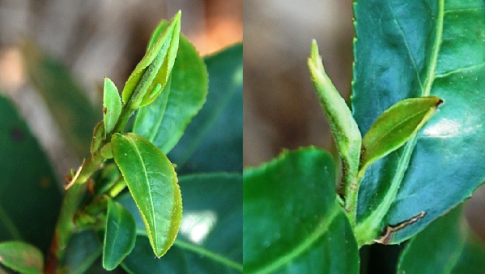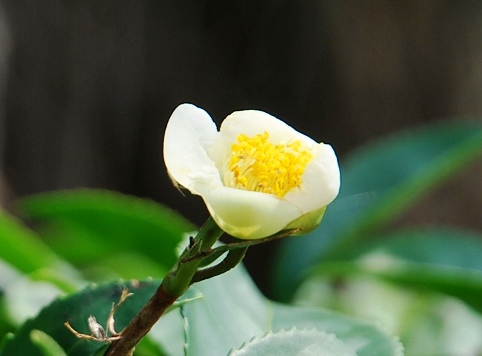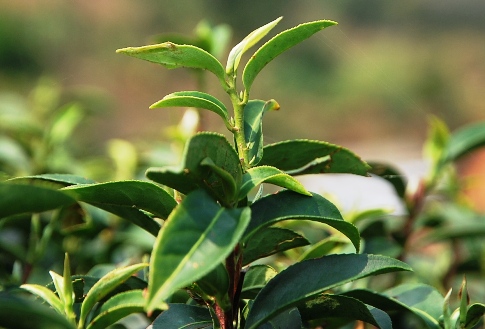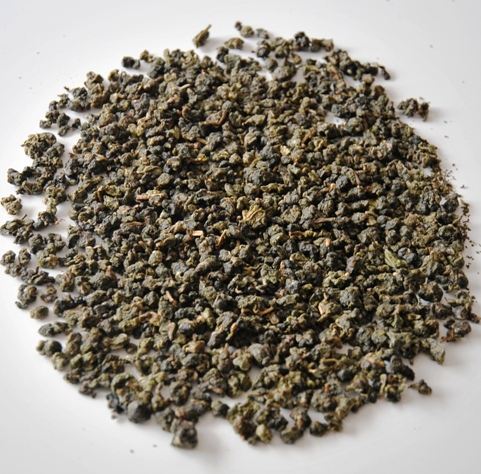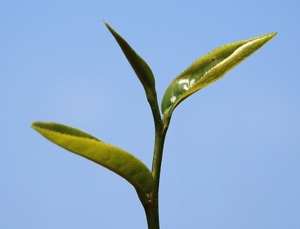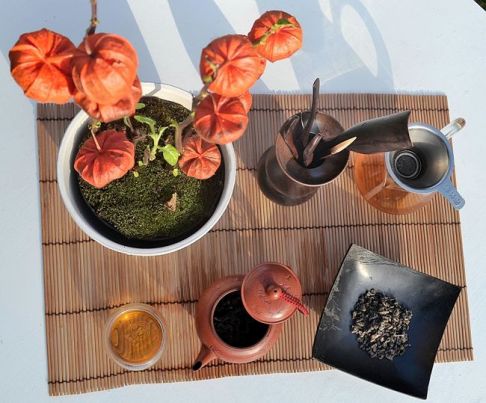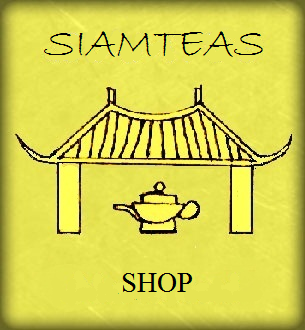Jin Xuan Oolong (Taiwan Tea Cultivar No. 12)
North Thailand’s Most Versatile Tea Plant Variety

There might be a common idea that a particular tea plant will produce a particular tea, at least I remember that at some point this had been my idea. It is, of course, not true. In principal, you can process any tea plant species’ leaves to a near-indefinite variety of teas: you can process them as a green tea, a black tea, or an Oolong tea of any degree of oxidation, you can dry it in the sun and process it Pu Er style, roast it or leave it, steam it, pan-fry it, break up the leaves or not, and you can harvest it in spring or summer or autumn or winter in the first place, just to mention a few options that come to me at once, when I start thinking about it.
Still, with time (in the case of Chinese or Taiwanese teas, this can be hundreds or even thousands of years) processing standards have evolved for most or all known tea plant varieties that are considered to be best or somehow favorable for this particular tea cultivar. A popular example: if you are buying a Darjeeling tea, you are going to expect it to be a black tea, while indeed there are Darjeeling green teas, made from exactly the same tea plant. We can’t be grateful enough for countries such as China and Taiwan doing all that experimental and developing work that finally led to the establishment of such standards. Imagine how long it takes, and how many resources are being used, to try something deviating from an existing tea processing standard even once, and try to imagine how broad the spectrum of possibilities is, namely near-indefinite indeed! However, for some tea plant varieties there isn’t just one standard, but several alternative ways to produce different teas of equal desirability have emerged instead.
Our Taiwan Jin Xuan Oolong tea cultivar No. 12 is a perfect example for this: by now, I have come to know it alternatively as an Oolong tea, as a black tea, and as a “winter tea” (Hoarfrost Tea). These at least are the different types of tea it is used for in north Thailand, and god only knows what other options might be known in other places, or are yet to be discovered in the future. I have covered our “Jin Xuan Black Pearls” in a dedicated article in this blog already (see “Doi Mae Salong Jin Xuan Black Pearls – How Black is This Tea, Really?”) and will go into detail about my most recent “discovery”, Jin Xuan Hoarfrost Tea, in another contribution to Siam Tea Blog soon, but here, I’d like to focus on its most genuine form of processing, namely that of a low-fermented, arguably “Pouchong” Oolong tea.
Arguably, because on the one hand, there is no clearly defined degree of fermentation / oxidation for what is to be called a Pouchong Oolong other than the rather vague term “low-fermented”, and on the other hand, our Jin Xuan Oolong No. 12 per standard comes with a degree of fermentation that might be low, but still slightly beyond what could be considered a Pouchong Oolong, and definitely way beyond near-green. As said before, arguably a Pouchong Oolong tea.
As for the more practical aspects of harvesting and processing Jin Xuan Oolong No. 12 in the standard way, please refer to our video Tea Production at Doi Mae Salong – the Processing of our DMS Jin Xuan Oolong No. 12. It may be mentioned that Jin Xuan Oolong No. 12 as such is harvested 4 times a year, whith an additional harvest during the winter months (mostly in December), the latter producing a very special tea called Jin Xuan Hoarfrost Tea (due to the hoarfrost being upon the tea plants during the early morning hours in winter), while the spring and summer harvests are also used to produce the Jin Xuan Black Pearls. In the following, though, I’d rather like to deal with the more “transcendent” aspects of this exceptional tea in general, as well as the particulars of what I am calling its “standard way of processing” .
Taste and aroma of the Jin Xuan Oolong tea are rather difficult to define or describe, since they consist of quite a number of components, who will be ever-changing in presence, mainly depending on the applied infusion time: we have the grassy elements, reminiscences of green tea or certain kinds of Pu Er tea, we have the earthy base notes that are so typical for Oolong teas in general, we do have some sweetness, too, this usually being a great contributor to a tea’s popularity, however for our Jin Xuan Oolong tea best felt with short steeps and increasingly giving way to a certain tartness, the latter by no means being unpleasant for the experienced Oolong tea drinker, while generally making Oolong teas rather “difficult to access” for the inexperienced Oolong tea newbie. Then, I can add some of my own individual perceptions, such as touch of malt, or even hops, causing me to even think of this tea as the “beer” amongst the Oolongs at times.
The beer analogy, as far-fetched as this might seem for some people, also points to another description I have often used to describe Jin Xuan Oolong tea: a most “honest” one among those “fine” Oolong teas that might not lure us with lots of sweetness or other tendentiously popular aromas, but brings the perception of giving us something really substantial, a felt anchor of undistorted sensual orientation and a bundling and focusing force in our mind’s receptors. In practice, this means that while I would embrace the sweetness of a Ruan Zhi Oolong No. 17 in order to celebrate a warm sunny day in spring coming with the blessing of an extended period of free time that can be spent lazy and unshadowed by compulsory obligations, I will prefer my Jin Xuan Oolong No. 12 to ease the burden of long working hours and boring must-do’s, or top off a bad day / hard time / harsh experience or unpleasant event, basically in order to make a point, and in the best case one of no return, a point from where I can start anew.
Now, all this might sound pretty transcendent and hard to capture for people whose lives isn’t as centered around tea as much as is mine. However, all these are attributes and perceptions that in these or other words will inevitably come to those digging deep enough into it. And that is where another dimension comes into play, which is the main factor for “difficult to access” character of “honest” Oolong teas such as the Jin Xuan Oolong No. 12: depth.
We might get broad and complex spectrums of tastes, aromas and pertaining associations with green teas or black teas, or with strongly fermented Oolongs such as Ti Guan Yin or Oriental Beauty, but those spectrums will generally be on the same hierarchical level, while especially high-grade lower fermented Oolong teas or Pouchong Oolong teas will distribute their taste and aroma elements over a wide range of hierarchical levels. For such teas, the tea drinker will encounter a “surface” first, often experienced as simple bitterness by newbies and outsiders. However, with every steep, every fill of the teapot, new layers will reveal themselves to those having the persistence to search for them and the openness to welcome them as well. Now, this process is not coming to an end at some point, or at least not at a point that I would have reached or that would be within my sight even at the far horizon, but indeed is a probably infinite process of discovering new worlds: notes, combinations and cross-level re-combinations of tastes, pertaining associations and metaphors, and the resulting delicate structure of perception, designed to be eternally further developed, thus making the taste of Oolong teas such as the Jin Xuan Oolong a representation of the universe, or creation, itself.
Okay, now I made the loop via what I called honesty all the way back to the said transcendence, but its enormous potential for transcendence of its true nature is exactly what makes Jin Xuan Oolong No. 12 a paragon for a vehicle of advanced human perception.
We have taken and edited a video depicting the entire process of the becoming of our DMS Jin Xuan Oolong Tea from the harvest via the individual drying and processing steps to the ready rolled tea leaves in wonderful moving pictures. Enjoy watching!
Of course, you can buy all the teas produced from the Jin Xuan Oolong No. 12 tea cultivar in north Thailand at Siam Tea Shop:


